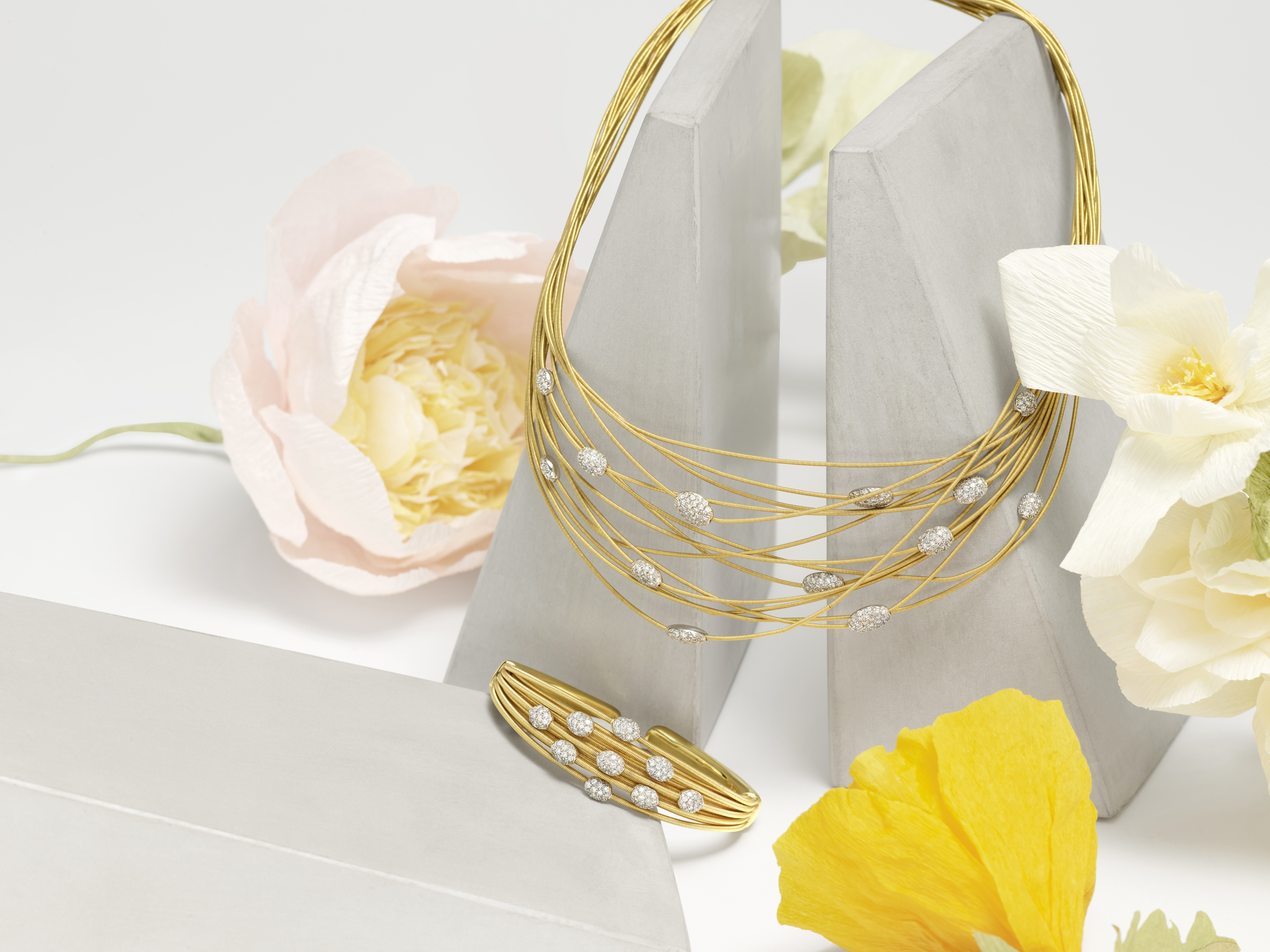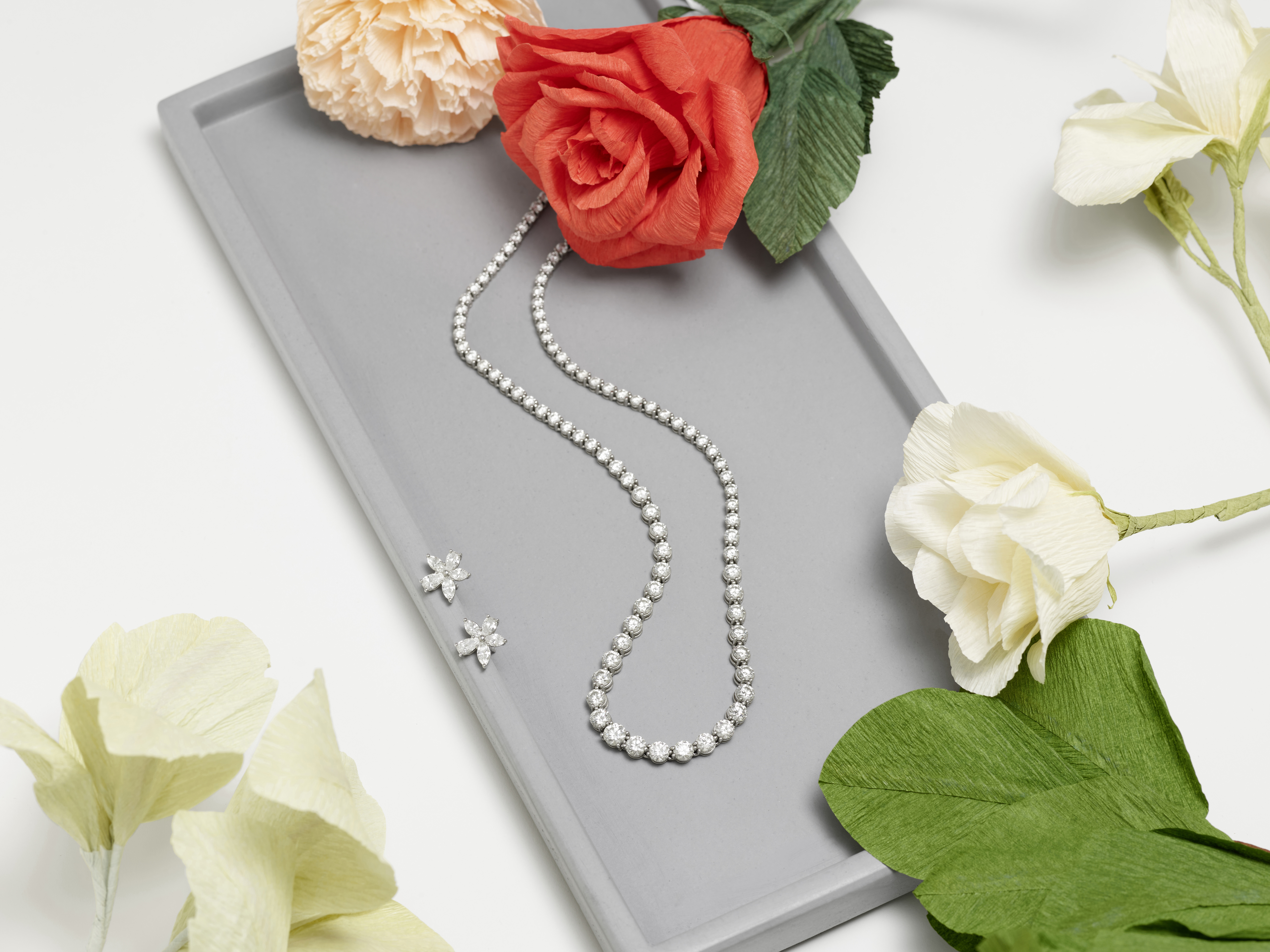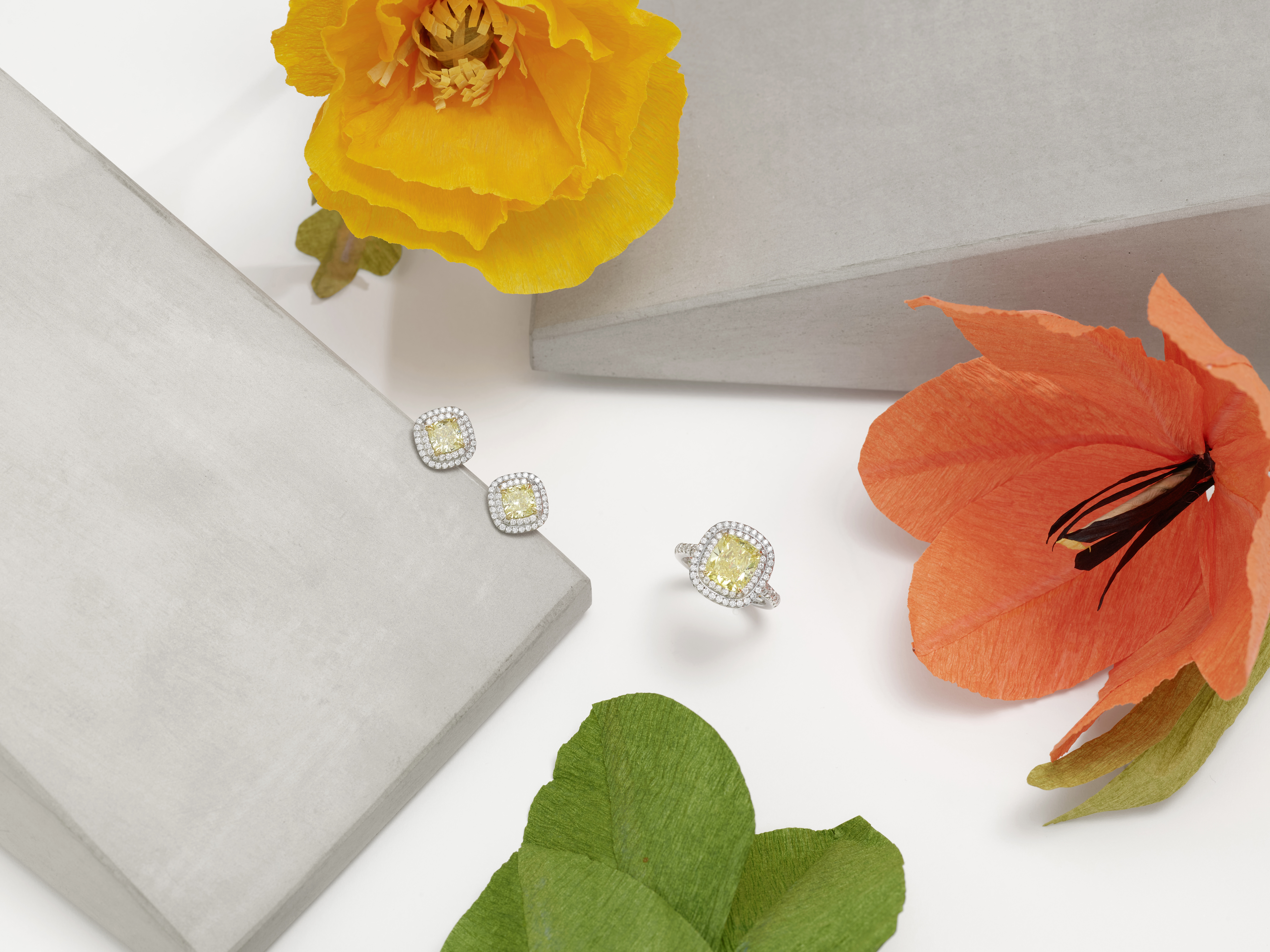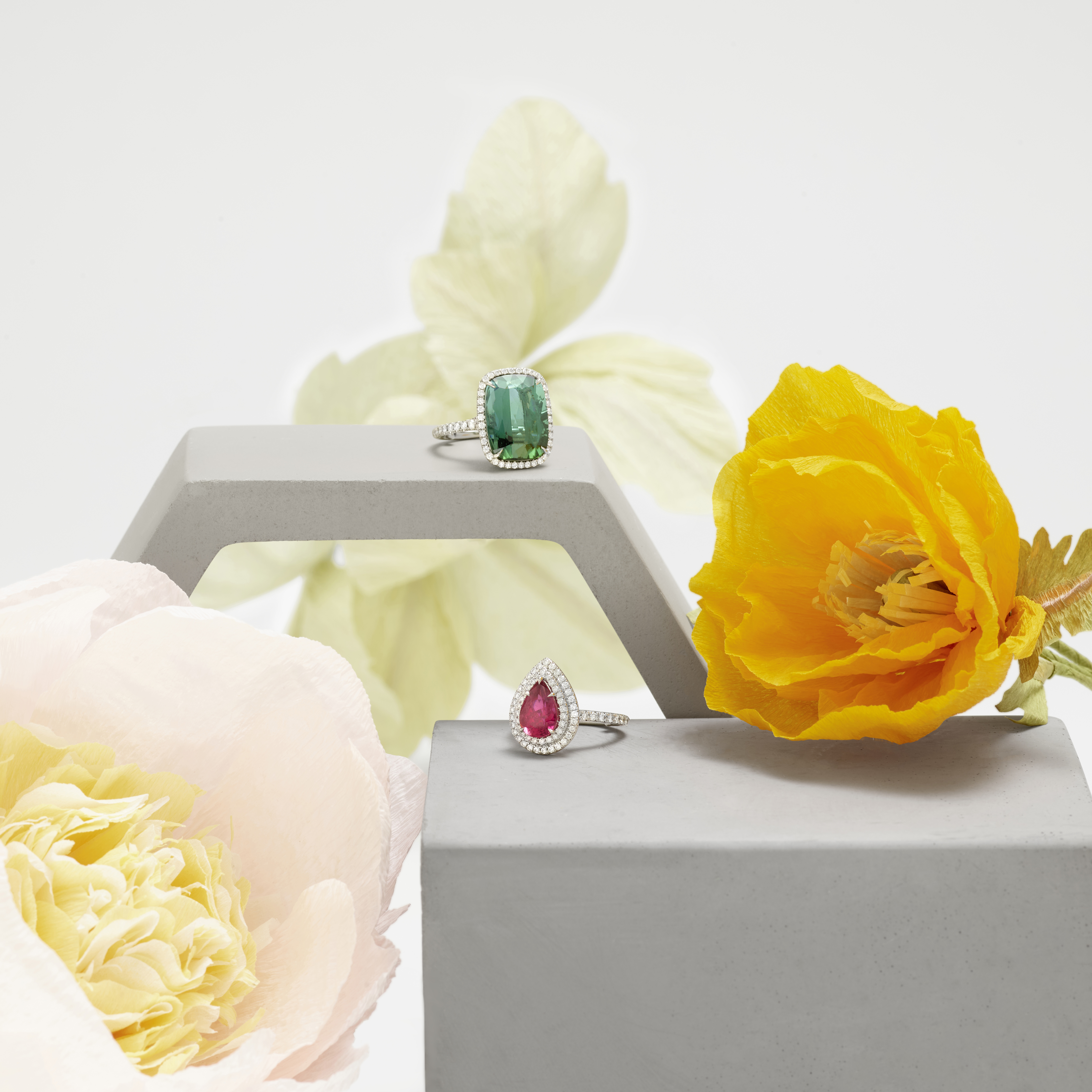Episode 160
What you’ll learn in this episode:
- What characteristics make a gemstone special
- Why collectors usually have a few pieces that don’t fit into the parameters of their collection
- Why old stones often have more charm than modern ones
- How to make trendy jewelry more timeless
- Which jewels have been the most memorable from Caroline’s auction career
About Caroline Morrissey
Caroline Morrissey is Director and Head of Jewelry at Bonhams in New York. Her areas of expertise span diamonds and colored gemstones to 20th century jewelry. She has a particular interest in large white and colored diamonds.
Since joining Bonhams in 2014, Caroline’s exceptional sales include a diamond riviere necklace, which sold for $1,205,000 in June 2015; a diamond solitaire ring which sold for $1,807,500 in September 2017; and an unmounted Kashmir sapphire which sold for $1,244,075 in July 2020.
Caroline discovered her passion for the jewelry business more than two decades ago, in a charming jewelry store in Edinburgh, Scotland, where she worked on weekends during high school. Her career started in the diamond industry in Antwerp, Belgium, and she has also held positions at the prominent luxury retailers Cartier and Leviev.
Caroline studied a double major in Economics and Politics from the University of York, England.
Photos:





Additional Resources:
Transcript:
What makes a gemstone stand out from the rest? You can talk about color, shape and cut, but sometimes a stone inexplicably draws you in. That’s the experience Caroline Morrissey has had many times as Director of the Jewelry Department for Bonhams in New York. She joined the Jewelry Journey Podcast to talk about the most memorable jewelry she’s sold; why collectors shouldn’t be too rigid about maintaining a specific theme for their collection; and what qualities make a gemstone special. Read the episode transcript here.
Sharon: Hello, everyone. Welcome to the Jewelry Journey Podcast. This is a two-part Jewelry Journey Podcast. Please make sure you subscribe so you can hear part two as soon as it comes out later this week.
Today, my guest is Caroline Morrissey, Director of the Jewelry Department for Bonhams, located in New York and around the world. Caroline’s area of expertise spans diamonds and colored gemstones through 20th century jewelry, but her passion is large, white diamonds—she has a lot of company there—and colored diamonds. She’s had a wide and varied jewelry career, which we’ll hear about today. Caroline, welcome to the program.
Caroline: Thank you so much. I’m so happy to be here.
Sharon: So glad to have you. Tell us about your jewelry journey. Were you attracted to diamonds and gems when you were young—well, you’re still young, but when you were a youth?
Caroline: Yes, I was. I always enjoyed, probably more than the average child, my grandmother’s jewelry. I was interested in it, but the big change for me came when a friend of mine—I grew up in Edinburgh in Scotland—his parents had a couple of jewelry stores. When I was 16, they asked if I would be able to help over the holiday period in December, just with small bits of jewelry and to run any errands and so on. I did, and I loved it.
I wanted to learn more, so I ended up staying as a Saturday girl and working through my summers until I graduated high school. It was during this that I realized there was more to a diamond engagement ring; there was more to a piece of jewelry. It meant something to the buyers. There was more than the just the stone behind it. Where did it come from? What was its journey? What was its quality compared to others? That never left me, and that experience put me on my journey to where I am now. It was wonderful.
Sharon: When you were talking about the story behind the stone, were you starting to differentiate the stone from the entire piece of jewelry?
Caroline: At that age, I realized that not all old diamonds were the same. To sell an engagement ring was a learning curve. It was about the piece of jewelry, but it was also about the clients. In many cases, it was actually about the client’s person who they loved. You didn’t necessarily meet that person, but it was going to be a specific piece of jewelry that was bought for this person. It really brought to light how personal it was. Pieces of art that are not jewelry, they might sit above your mantlepiece, but you don’t wear them. I think that is the difference for me with jewelry. It’s so very, very personal.
Sharon: Would you say the personal aspect applies to jewelry in general as opposed to anything else?
Caroline: I would, because people acquire jewelry in different ways. Any jewelry that has been passed down from a member of their family is personal for reasons that are different. But that piece of jewelry that you’ve bought for yourself, there’s a reason why you’ve bought it. The same again if somebody close, whether it’s a partner or a child or a friend, gives you a piece of jewelry. All of these different ways of acquiring jewelry are very personal.
It goes to other people, but the journey is like a charm bracelet. The charms can be very personal to one person, but the next person might still be interested in that charm bracelet for different reasons. That continuing, varying personal connection with jewelry, for me, is quite unique in the collecting field. Unlike other pieces of art, you actually wear it, and you have to like it to wear it. It sometimes needs to mean something to you to wear it as well.
Sharon: You must find a lot of that personal aspect at Bonhams, being able to tie one piece to a person to sell it. I mean that in a nice way, in terms of how to draw out what their story is and then be able to connect it.
Caroline: Absolutely. Everyone has their own story, whether it’s from a selling point of view or a buying point of view. It’s an amazing opportunity to be able to connect with those people and understand what is behind them wanting to do a certain thing, whether it’s to sell or to buy, and to understand what is important to them. We can say, “You should be interested in this piece of jewelry or this stone for this particular reason,” and that may well be true in the grand scheme of things, but people personally can have different reasons. There’s nothing wrong with that. We are all attracted to different colors, different textures, for our own reasons. I think jewelry really shows different personalities and different trends, and it can also change. I’m always surprised by bits of jewelry that I like that might not necessarily be a standard for me, but it’s O.K. to deviate from that. Something is appearing that’s not necessarily something I can explain, if that makes sense.
Sharon: Yes. How does all this tie to Bonhams? How does it tie to the auction market? As pieces come across your desk, do they talk to you?
Caroline: Some talk really loudly in negative ways and positive ways, but mostly positive. I think one of the reasons I enjoy auction is that it’s a real opportunity to see the best of the best. I say that with honesty because I don’t think one can really appreciate the most spectacular pieces of jewelry and gemstones without fully comprehending that not every piece is of that same caliber, and that there are ones that really stand out. It affords me the ability to see pieces made yesterday and pieces made 150-200 years ago. You can see what was in vogue 70 years ago versus what is now, what colors, what gemstones, what shapes, what styles.
Together with the variety in jewelry comes the huge variety in people that have owned them or bough the jewelry. I’m a people person, and it’s amazing to hear people’s stories, people’s situations, people’s needs, and tie that all together with jewelry. You get a greater level of understanding of what will make them happy and what jewelry is doing in their lives right now.
Sharon: As a professional, how does Bonhams fit into all this? How does it fit into the whole auction market, as opposed a Doyle, a Christie’s, a Sotheby’s, that sort of thing? Where does Bonhams fit into all that?
Caroline: First of all, at Bonhams we have more than 50 jewelry auctions a year throughout the world, which is a lot. One of the great things is that we offer pieces at almost every single price point, so there are no barriers to buy jewelry at Bonhams. There’s going to be something for everybody. For somebody who’s looking to sell, we have the ability to take an entire estate or an entire collection. We’re not going to come in and just take the top lots; it’s going to be a one-source solution for the entire collection, and that can be really helpful. On the other side of that, it affords the buyer a huge variety within a collection to browse through and see what works for them at Bonhams.
I like to view Bonhams as being a boutique auction house. We have the ability to work with clients from the beginning to the end of their journey and put together something for them that is unique and custom and will work with their situation. It’s not cookie cutter. In some ways that could create a little more work, but it’s the end result that matters. There’s something wonderfully satisfying to meet clients on the first day of their inquiry and to shake their hands at the end of a successful sale. Being there to answer all of the questions and travel down the road together is very, very satisfying, and it’s a privilege.
Sharon: Is that your role there? Are you called in when somebody says, “I need the big guns on this”? How does that work?
Caroline: Yes, sometimes. It’s very collaborative here, so we work together. But, sure, I have a level of expertise where sometimes I can come in and give my opinion with other members of staff. It depends on the situation. There are some people where their situation is very straightforward and other people where it’s not straightforward at all. Some people can make decisions quickly; some people need extra time. There’s no right or wrong.
I can’t say I do it with everybody, but I have a lot of clients that I deal with directly myself, and it is a true pleasure to go from the beginning to the end. Most people who deal with jewelry in New York at Bonhams will come across my place at some point in their journey here.
Sharon: It must be satisfying to have pieces of jewelry come across your desk and then call a client you’ve worked with in the past and say, “You have got to see this piece.”
Caroline: Absolutely.
Sharon: Do you find that’s something you end up doing quite a bit? How does that work?
Caroline: We’ve got a sale coming up next week, and we have some very interesting pieces in it. This doesn’t happen every day with every sale, but certainly with the pieces in this particular one. We have a beautiful emerald bracelet. It’s an amazing opportunity for me to call some of my clients and say, “You have to see this. I know you’re going to be interested in it. Whether or not you end up as the final buyer, even if you don’t bid, it is fabulous enough for you to make the effort to come see it with your own eyes. If you’re interested in jewelry, this is something you have to see.” I don’t always have that opportunity, but that’s what I’ve been doing this week and last week with this particular piece. It’s nice to see everybody come together and to hear their opinions. At the end of the day, everyone has their own opinions, but in most cases we agree. It’s nice to get people to come out of the woodwork for something special.
Sharon: Coming out of the woodwork, that must be very satisfying. In reading about you and from what I’ve been told about your background, it sounds like your expertise is jewelry, but especially gems themselves, the colored diamonds, the diamonds. Is that the case?
Caroline: Yes, I have to just admit to it and say yes. I started off my career proper in Antwerp, Belgium in the diamond business. I looked at so many diamonds in my training there that I think there would have been something wrong if I hadn’t fallen head over heels in love with diamonds. There’s something to me that’s special about stones, and not just diamonds, but colored stones. To me, they all have a personality; they all have a charm. I love how the different facets, the different colors, the different shapes all can combine to produce something absolutely wonderful. In many cases, it combines to make something not so wonderful, or they’re close to being perfect but not quite. Then it requires you to think, “Who can help get this stone to the next level?” because there might be a buyer out there who could make something a bit more perfect or a bit more desirable. That’s not to say I don’t love jewelry. I truly do, but if I had to choose, holding a really special gemstone in my hands without a mounting is always going to be a thrill for me.
Sharon: When you say a really special gemstone, what’s making it special? The cut, the color, everything?
Caroline: Where do I begin? It’s going to be a little bit of everything. Obviously, it depends on exactly what gemstone we’re talking about, but to keep things relatively simple, the shape and the cut of the stone is one of the most important things because that is what your eye sees the moment it lays eyes on the stone.
The next thing is going to be color. If you think of a ruby, you think of red. So, you want the overall appearance of any ruby you see to be red. That sounds like a very simple request, for lack of a better word, but not all rubies are as red as you want them to be. That doesn’t make them inferior in the grand scheme of things, but it does alter how your brain processes that. Then within that color, how soft is the color, how clean is the stone when you’re taking a closer look, how old is the stone?
In many cases, some of the most charming stones were cut 100 or 150 years ago. I have this joke in my head that the lack of technology when it comes to cutting stones can sometimes result in a superior stone. I think today we have all these wonderful techniques and technology to make everything perfect, but sometimes what they did with their bare hands and their eyes a hundred years ago can make a stone even more perfect than you can make today. Maybe perfect is the wrong word; maybe charming. But so many old stones are full of character that is rare to see today.
Sharon: It takes somebody who really appreciates the stone to see what you’re saying. I look at a stone and I see a stone, unless it’s really—for example, this weekend somebody showed me a ring from the 40s with citrine. It was not a good citrine; it was too light. I knew it was way too light, but I’m looking at something from a real simplistic perspective. If it was an emerald, I’d say, “Oh, it’s green to me.” Do you see green in a ruby? Is that what you were saying?
Caroline: Oh no, I’m just saying that a ruby is technically red, but there’s pinkish red; there’s purplish red. I have to say that even for somebody whose profession isn’t looking at gemstones in the way I do, I do think that somebody who is interested in gemstones and jewelry—for example, my father is an architect, so he’s got an eye for design and details. You would be surprised at how much the naked eye just looking at something will tell you.
I reckon that if I lined up some stones, probably a lot of laymen could look at them and point out the best stone because in many ways, you’re just drawn to it. You might not be able to articulate exactly why you’re drawn to it, but you will just be drawn to it. That’s another reason why I love these stones. You can’t always get to the nuts and bolts of exactly why. There’s just something that is appealing to you.
Sharon: You used the word charming a couple of times. What makes a stone charming?
Caroline: Oh, wow! What makes a stone charming to me? Well, the old style of cutting, which is—and I don’t want to get too technical—but big facets, a big, open stone. Usually, they have soft edges versus straight edges, soft corners. If it’s in a piece of jewelry, the mounting is most likely going to be something simple which brings your eyes to the center of the stone, versus so much detail or clunkiness that you sometimes see in today’s mountings. Also, a lot of modern mountings try very hard. Old mountings don’t try as hard. They let the stone sing for itself, and I think it’s that perfect balance that can make a stone on a piece of jewelry charming.
Sharon: Do you have collectors who collect jewelry because of the stone? Do you have stone collectors?
Caroline: Sure, I suppose people who buy at auction appear in all shapes and forms. You never know exactly why they’re buying something, but I think you have your jewelry collectors, and you have your stone people. Those guys are fairly easy to differentiate between, but then you have a pool of collectors for whom the stones and the jewelry belong together. Both of them need to be correct, if that makes sense. You could have this fabulous old diamond, but it’s only fabulous if it’s in the original mounting. Even if it’s not a particularly exquisite mounting, it is in its original mounting, so the two work together as a piece.
For those people, it might be a big collection they’re working towards, or it might not be. It might be something they’re going to wear occasionally, and they have statement pieces of jewelry that appeal to them. I always like to try and work out why people are buying certain things and what their end goal is, but as long as they’re enthusiastic about the piece and it talks to them, then I’m not sure anything else matters.
Sharon: Don’t you at least have to have a sense of why it’s talking to them so you can identify other things? So you can talk to them about what’s talking to them, basically?
Caroline: Sure, but I don’t know if it’s necessarily always specific. If somebody is interested in important colored stones, I will make sure to keep them on my radar for important pieces that come in. But they might turn around and say, “I’m not really interested in emeralds unless they are such and such.” I think you can get a lot of information from people to help them with furthering their collection or help them with what they want to do with an existing collection, but with the jewelry world certainly—and I can’t speak to any other field—I do like to think that if something special comes along, be it a piece of jewelry or a gemstone or a combination of both, it doesn’t necessarily need to fit into what they have or what they think they want. It’s like a wild card or a curve ball. It might just be the right thing at the right time, and they might have been in the industry long enough to know that some things are really rare, and this is an opportunity. I guess it is my role to keep those doors open.
I don’t necessarily need to know too specifically what somebody is interested in because I don’t not want to contact them about something just because it falls slightly outside those parameters. If somebody has a level of understanding and a passion, they might be open to all sorts of options, and some jewelry items don’t come around that often. Like I said before, even if it’s just, “Come and look and touch and handle and see that color with your own eyes,” it can be worth it. That can allow somebody to follow their own jewelry journey, even if they’re not adding it specifically to their own personal collection.
Sharon: That’s a really good point. As long as I’ve been doing this, I’ve never ascertained what I collect. I just collect things I like.
Caroline: Absolutely, and it’s hard to articulate that. Also, just like styles and fashions, things come in sets. You might like something in one period of your life and change to something else. I currently have a little bit of a love affair with the late Deco, early retro jewelry period. This took me by storm a couple of years ago. It was a couple of pieces of jewelry that came in and landed on my desk, and I couldn’t take my eyes off of them. It was very out of character from what I normally like. I don’t know if it will last, but that’s why I never want to impose too many parameters because you never know what might take your fancy.

